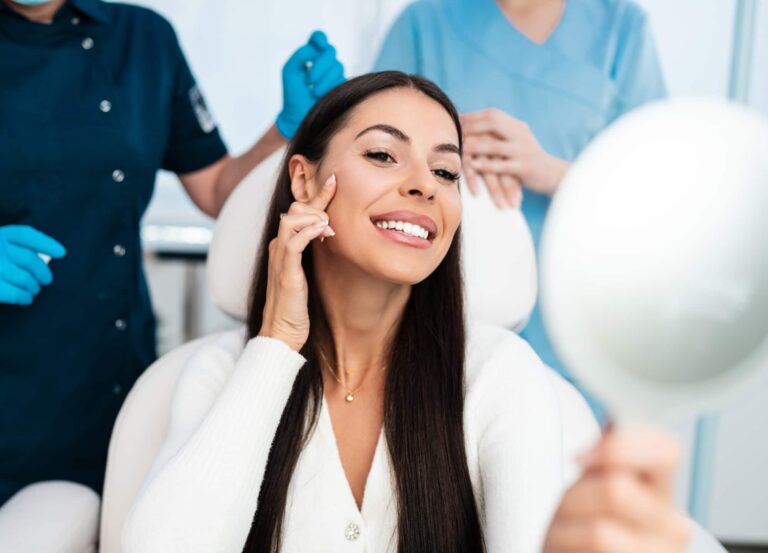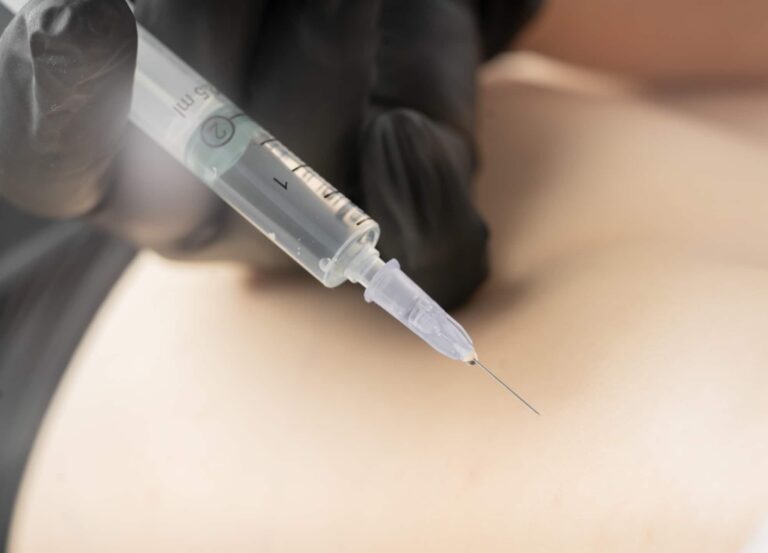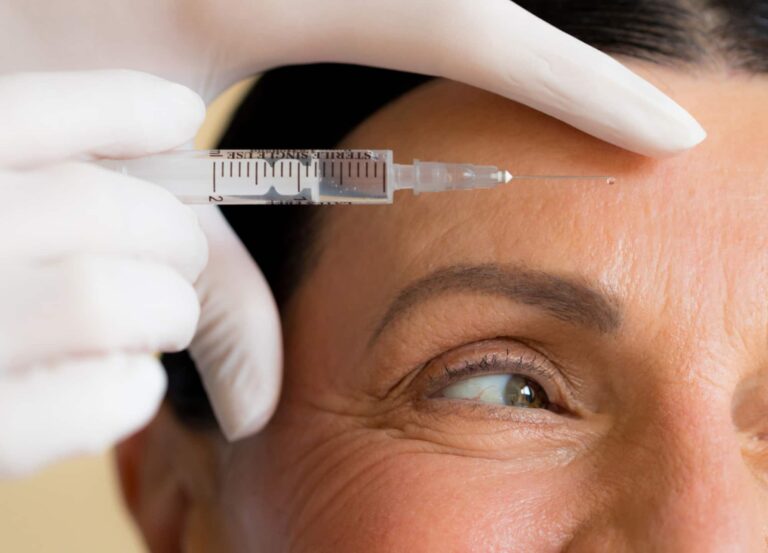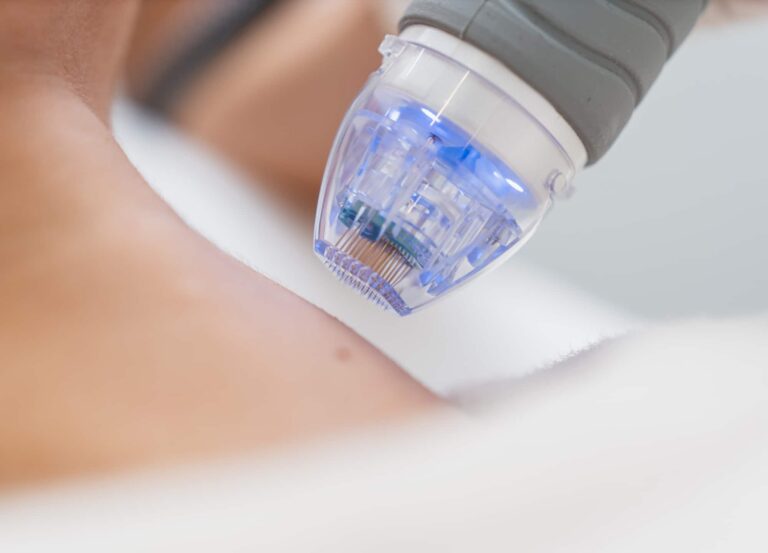The relationship between Instagram and injectables is a complicated one. The photo-sharing app recently banned filler-inspired filters. It hides Botox ads from users under the age of 18. As of Jan. 31, 2020, the United Kingdom’s Advertising Standards Authority prohibits the promotion of all wrinkle-relaxing injections in the U.K., and influencers the world over continually face criticism for posting ads for injectables. Ahem, #ads.
But what if that endorsement for lip filler isn’t an ad but an opinion? And what if that opinion doesn’t come from an “influencer” but a medical professional? One who just happens to have tens or even hundreds of thousands of followers?
This is the yet-unsettled and somewhat unsettling territory occupied by medical influencers in the beauty industry—dermatologists, nurse practitioners, naturopaths, chemists, aestheticians—many of whom hesitate to use the term medical influencer, but influence nonetheless.
“I’m a registered nurse and a bit of a mad skin scientist,” says Jamie Sherril, better known as Nurse Jamie, a beauty brand founder and cosmetic injector. She also describes herself as “an artist, sculptor, and therapist all wrapped up into one” as well as “the big sister you wish you had.” Sherill artfully avoids labeling herself as an influencer, despite an Instagram following of nearly 300,000.
“My page is all about information—it’s information only,” she explains. (She even goes so far as to write this in her bio.) “It’s dependable and reliable information, because I’m not just a provider, I’m also a client. I am my own alpha test site.”
Melissa Berg, a registered nurse and injector known to her 75,000 followers as The Beauty Nurse, feels similarly. “I wouldn’t consider myself a ‘medical influencer’ but more of a lifestyle and beauty influencer,” she says. Berg is careful to note: the products she promotes on her page are merely those that work for her, and the procedures she posts require in-office consultations.
Semantics aside, information influences… and it could be argued that the information Sherill, Berg, and many of their aesthetics-minded peers provide is incomplete. The nurses regularly post about Botox, Radiesse, Juvéderm, Restylane, Sculptra Aesthetic, and more, with seldom a mention of the substances’ side effects and risks. These include complications both small and large, from itching and bruising to stroke and blindness—not-insignificant points that, should any of these posts qualify as advertisements, would legally need to be disclosed. Which brings up an interesting point: Are they ads?
Both nurses—and an overwhelming number of dermatologists-turned-Instagram-influencers—technically do stand to profit from the information they’re providing, via their personal nonsurgical practices (like Sherril’s Beauty Park Medical Spa and Berg’s Crafted Beauty). On one hand, no one is paying medical influencers to create the majority of their content. But on the other, surely these posts function as advertisements for the influencers’ own practices and product lines, which eventually impacts their bottom line.
It’s tricky territory to navigate, especially considering that the U.S. Food & Drug Administration and the Federal Trade Commission currently have no policies in place to monitor the independent promotion of aesthetic treatments. “I think [in the future] there will be more and more regulations and guidelines for influencers in healthcare and skin care, which is good and bad,” Sherril says. “I would expect there to be a lot more disclaimers and more testimonials,” but “it’s so great that anyone can post and share experiences.”
The experiences shared by “medical influencers” are hardly limited to injectables. As the skin-care and wellness markets continue to grow, so do the number of health and beauty accounts on social media.
Related: Plastic Surgery Patients Are More Difficult Than Ever. Doctors Blame Social Media.
“I wouldn’t [consider myself a medical influencer]—I don’t have a medical degree, so I’m not qualified to diagnose or treat medical conditions,” says Michelle Wong, a science educator who holds a Ph.D. in chemistry and runs @labmuffinbeautyscience, a “beauty science” Instagram account with more than 100,000 followers. Both Wong’s blog and YouTube channel feature prominent disclaimers: “I am not a medical doctor. While care has been taken to ensure the accuracy of the information here, it is provided for education and research purposes only.”
Still, whether she’s a medical professional or not, much of the educational information Wong shares does have the propensity to impact her followers’ health. Take, for example, her arguably “pro” stance on chemical sunscreen ingredients. Six of them have been shown to absorb into the blood at levels that surpass the FDA’s safety threshold—meaning, the ingredients haven’t been thoroughly tested for human safety at such levels. It’s technically unknown whether they present any long-term health risks.
“I focus on presenting the evidence on ingredients and products,” Wong says, noting that her posts are always backed by peer-reviewed research. “I don’t give any personalized advice to specific individuals about what they should do, except of a very general nature.”
Part of Wong’s hesitation here is that she’s seen other medical influencers dole out what she deems “fear-mongering” information or resort to “full quackery.” “I’ve seen doctors give advice to make nutritional changes [that] I don’t think are backed by enough evidence to be good general advice, nor do I think it’s safe,” she explains. “I’ve also seen many doctors and scientists endorse products and spread misinformation. For example, I’ve seen scientists endorse healing crystals.”
“I see a lot of hate, fear, and judgment-based posts,” agrees Rachel Eva Dew, a doctor of naturopathic medicine with 30,000 Instagram followers. “I also see a lot of misleading or downright incorrect information being shared as well.”
Perhaps this points to the real reason hard guidelines probably won’t (and maybe shouldn’t) ever be enforced on social media when it comes to the information being shared: Science isn’t static.
Scientists disagree on data. Doctors disagree on data. The data itself often disagrees with other data. On some issues, doctors’ approaches and beliefs differ greatly because the science differs greatly—science is a human pursuit, after all, and is just as nuanced and changeable and prone to error as the humans evaluating it. On other issues, the peer-reviewed studies just aren’t available yet… but that doesn’t necessarily discredit the concepts in question.
With this in mind, the wide range of medical influencers in the beauty industry serves a purpose. Following someone like Wong, who is fond of saying, “Clean beauty isn’t a thing,” and also following someone like Dr. Rachel, who “speaks quite often on the importance of clean, nontoxic skin care,” as she says, is the Instagram equivalent of getting a second opinion. Both POVs offer insight into often misunderstood sectors of the industry: cosmetic chemistry and holistic healing.
Chief dermatologist resident Dr. Adeline Kikam, aka @brownskinderm, started her account to shine light on another oft-overlooked market. “I created it to raise awareness about the care and dermatologic concerns of skin of color in a way that I was not seeing discussed on social media,” she says. While Dr. Kikam isn’t as cautious about claiming the title “medical influencer” as others in the space are, “medical influencing is only part of what I do,” she says. “I also use my platform to promote discussions on sociocultural issues pertaining to beauty, medicine, and society at large.”
As one of few medically trained experts who focus on skin of color on Instagram, Dr. Kikam is inundated with direct messages on the daily. “I get DMs every day from all over the world—Europe, Africa, the Middle East, America—requesting medical advice in the form of unsolicited pictures and detailed skin concerns,” the dermatology resident reveals. But, of course, a code of ethics prevents Dr. Kikam from giving personalized skin-care advice on Instagram. So far, it’s also prevented her from creating any sponsored content. “Although I get so many offers to promote products via ads on my page, I have yet to accept a paid ad,” she says.
This isn’t always the case. Sherril has been known to feature paid ads on her Instagram page, particularly for lasers (“some people like new cars, but I can’t tell you how excited I get to uncrate a new laser,” she says), and Berg collaborates with sponsors every once in a while too. “Some form of monetization is necessary for reasonably frequent, high-quality, long-form content creation,” Wong points out. “Sponsored posts are one of the few substantial income sources for influencers.” All the medical influencers interviewed agree that discretion is key; those who run ads emphasize that they only accept sponsorship from brands they would use themselves.
Of course, medical influencers aren’t exempt from the rules of #sponcon: in the U.S., anything paid for by an advertiser is required to display the hashtag “#ad” or otherwise indicate that the content is sponsored. Dr. Rachel believes that the majority of medical influencers are extremely careful when it comes to these requirements. “Legally, any influencer who holds a license or certification is already bound by certain ethical and legal standards,” she explains. This code of ethics carries over into Instagram posts that involve gifted products and freebies. “As physicians, we are taught to disclose conflicts of interest when it comes to research and when we present to an audience on medical topics, so I don’t think this anything new for us to do,” says the dermatology resident.
The question is: Even with full transparency, even with above-and-beyond disclosure, even with a focus on information over influence… isn’t the influence still there? And isn’t it, to some extent, even more influential coming from a medical or scientific professional? And doesn’t it have a greater chance of impacting followers’ opinions and, in some cases, health than the typical influencer’s content? In Berg’s experience, all signs point to yes. “I have really stepped back on showing videos of me injecting on social media, as I have had people message me telling me they will order fillers from overseas and do it themselves [using my technique],” she reveals.
Other medical influencers have taken similar steps back. “Medical influencing for me means that … I won’t be enticing you to book into my clinic,” wrote Dr. Anjali Mahto, a dermatologist in the U.K., to her 60,000 Instagram followers in late 2019. “It means I won’t be telling you to buy my book. It means I will no longer post before and after pictures of patients.”
Removing treatment videos and before and after images—critical categories of posts for injectors who want to promote their services—seems a bit extreme. But perhaps it makes sense: Some after photos would undoubtedly reveal incredible transformations; others would reveal images of necrosis of the skin, poor cosmetic result, or allergic reaction. Presenting one without the other could be seen as skipping the all-important side effects section, of covering up the potential complications—actions that may not carry legal repercussions but, potentially, ethical ones.
“There are many people who are using social media creatively and positively in a way that empowers others,” Dr. Kikam says. “But there are definitely legitimate concerns that are worth examining, with the way the ‘influential industry’ operates right now.”











